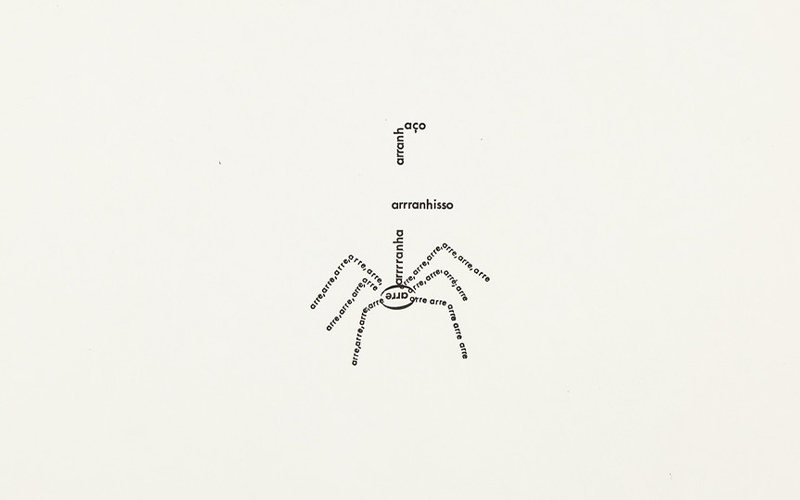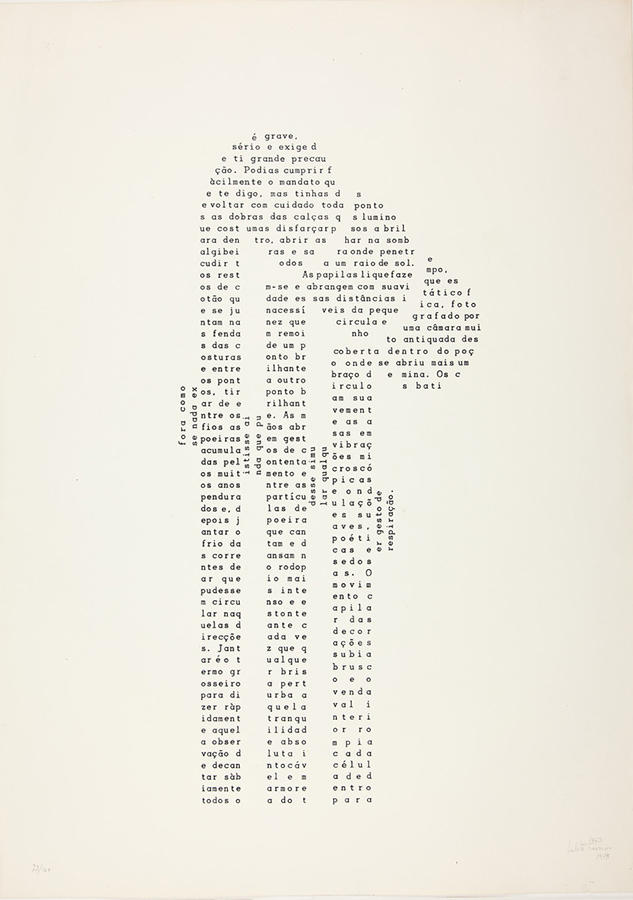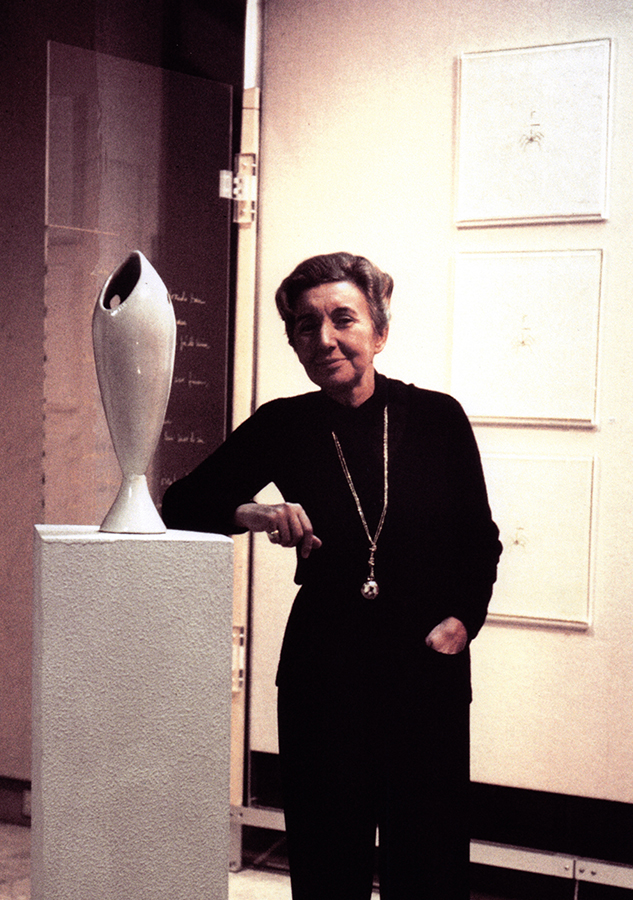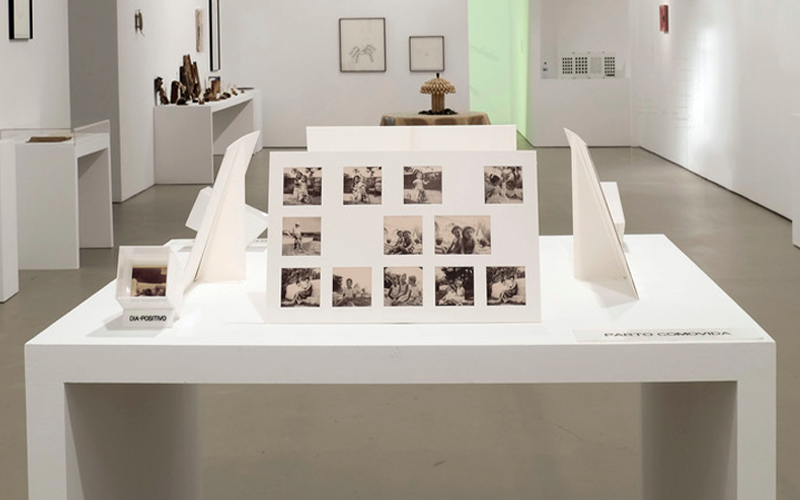‘arre, arre, arre, arre, arre’

Salette Tavares was a key figure in Portuguese Experimental Poetry, who used the word as a visual component and transformed the poem into form and content. Here, the shape of a spider is drawn with words: ‘Arre’ is the head and feet of the spider; ‘arrrranha’ is the body; ‘arrranhisso’ and ‘arranh/aço’ form a line of spun silk.
Writing and shape are interlinked. The spider is positioned centrally on the white sheet, with a deliberate space left around it. The sound of the word aranha, spider in Portuguese, in its phonetic dimension, draws spectators in to read and re-read the spider, the shape.
Some years later, in a letter to Ana Hatherly, Salette Tavares explained how the spider came about: ‘It must have been during Carnival, a short while ago, and my children had a spider, which led to a series of drawings which I still have and am thinking of publishing. That’s the origin of the spider that everyone knows, made of Letraset.’1 In this case, the spider, a symbol of protection, regarded in some cultures to be the creator mother, the weaver of destiny, devotes herself to spinning, to the construction of protection, a web, which at the same time can be used to capture other animals.
Salette Tavares’ spatial, phonetic and morphological concerns are configured into this typographic print that lies within the world of Portuguese Experimental Poetry. In 1964, Salette worked on the first Cadernos de Poesia Experimental [Experimental Poetry Notebooks] and her contribution was entitled Brin Cadeiras [brincadeiras meaning games/jokes, cadeiras meaning chairs]. Part of this was a series of typographic poems including Aranha [Spider] and Efes [F’s], in which, once again, the words take a visual form.


Salette produced three visual poems linked to the image of the spider: this work, Aranha, a typographic print from 1963; Aranhão [Big Spider], a silk-screen print from 1978; and Borboleta de Aranhas [Butterfly of Spiders], a collage from 1979. Aranhão and Borboleta de Aranhas appeared later, in a multiplication of spiders, positioned once again in the centre of the white sheet.
In 1979, Salette Tavares had the opportunity to hold the exhibition Brincar [Play] at Galeria Quadrum in Lisbon, one of the main galleries promoting Portuguese experimentalism during the 1960s and 70s, directed at the time by Dulce d’Agro. Salette was also one of the few artists who, during the 1960s, developed work in the areas of art criticism and aesthetic theory.

The worlds conjured by her visual and poetic work are magical and fascinating, and arouse great curiosity. The exhibition Salette Tavares. Poesia Espacial [Salette Tavares. Spatial Poetry], which I organised with Margarida Brito Alves at CAM in 2014, comprehensively brought Salette Tavares’ visual and spatial poetry to light and led to the inclusion in the Collection, for the first time, of six key works by the artist, including Aranha, as well as Porta das Maravilhas [Door of Wonders], from 1979, and the sculpture Bailia [a form of lyric poetry] from 1979-2014, a spatialised poem.
Patrícia Rosas
Curator of the CAM
1 Transcrição da Carta de Salette Tavares para Ana Hatherly’, Salette Tavares. Poesia Gráfica. Lisbon: Casa Fernando Pessoa, 1995, p. 17.
Curators’ Choices
The curators of the CAM reflect on a selection of works, which include creations by national and international artists.
More choices